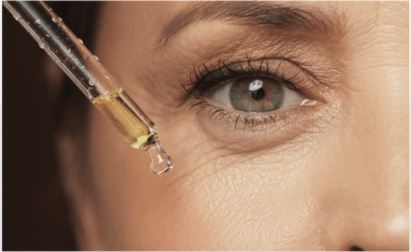Chronic migraines can be debilitating, affecting one's quality of life, and traditional treatments may not always provide the desired relief. In recent years, Botox injections have emerged as a promising option for those seeking relief from chronic migraines. Originally known for its cosmetic uses, Botox has been FDA-approved for treating migraines since 2010. It works by blocking the release of certain chemicals involved in pain transmission, thereby reducing the frequency and severity of migraine attacks.
But where are Botox injections given for migraines? Understanding the specific injection sites is crucial for effective treatment. Unlike cosmetic Botox, which is typically administered to facial muscles, migraine Botox involves a series of injections around the head and neck. These targeted areas are carefully selected to intercept the pathways involved in migraine pain.
At Beauty O’Clock Medical Spa, our experienced practitioners are well-versed in identifying these key sites to ensure optimal results for migraine sufferers. If you are ready to explore this treatment option, book an appointment or schedule a free consultation with us, or call us at 647-812-8752 for more information. Discover the potential of Botox in transforming your migraine management and reclaiming your life.
How Botox Alleviates Migraine Pain

Botox, or onabotulinumtoxinA, provides migraine relief through a mechanism that differs from its cosmetic applications. When used for aesthetic purposes, Botox temporarily relaxes muscles to reduce the appearance of wrinkles. However, in the context of migraines, its function is more nuanced and involves a complex interaction with the nervous system.
Once injected, Botox works by inhibiting the release of neurotransmitters that are associated with pain and inflammation. These neurotransmitters, particularly calcitonin gene-related peptide (CGRP), play a significant role in the pathophysiology of migraines. By blocking the release of CGRP and other pain-related chemicals, Botox effectively reduces the frequency and intensity of migraine attacks.
The injections are administered in a series of around 31 shots, targeting specific sites across the forehead, temples, back of the head, neck, and shoulders. This strategic approach is designed to prevent the activation of pain networks that contribute to migraine development. The relief provided by Botox can last for up to 12 weeks, making it a popular choice for individuals seeking longer-term management of their migraine symptoms.
Understanding the science behind Botox for migraines highlights its role as a preventive treatment rather than a quick fix for acute attacks. Patients typically receive treatments every 12 weeks to maintain efficacy, making it a viable option for chronic migraine sufferers looking to improve their quality of life.
Specific Injection Sites for Migraine Relief

When it comes to alleviating migraines with Botox, the precision of the injection sites plays a crucial role in its effectiveness. Administering Botox for migraine relief involves targeting specific areas known to be involved in the pathophysiology of migraines. The treatment generally covers seven key muscle areas around the head and neck, strategically selected to block the transmission of pain signals.
- Forehead: Injections are typically placed in the procerus and corrugator muscles, which are located above the eyebrows. This area is often associated with tension and stress-related headaches.
- Temples: The temporalis muscle, found on each side of the head, is frequently targeted to alleviate pain that radiates from the temples.
- Back of the Head: Injections here are administered into the occipital muscles. This area is commonly linked to tension-type headaches and migraine onset.
- Neck: The cervical paraspinal muscles are targeted to relieve tension in the neck, which can contribute to migraine symptoms.
- Upper Back: The trapezius muscles, found on the upper back and shoulders, are injected to reduce stress and tension that can exacerbate migraines.
By focusing on these specific sites, Botox aims to interrupt the cycle of pain transmission, offering patients a significant reduction in migraine frequency and severity. It's important for this treatment to be performed by professionals trained in migraine management to ensure precision and safety. The strategic placement of injections is a testament to the thorough understanding of migraine pathophysiology that guides Botox therapy.
Benefits of Botox for Migraine Sufferers
For individuals plagued by chronic migraines, Botox offers a beacon of hope through its innovative approach to pain management. Initially recognized for its cosmetic benefits, Botox has emerged as a groundbreaking treatment for those seeking relief from persistent migraine symptoms. The *benefits* of using Botox for migraine sufferers extend beyond mere pain reduction, providing a multifaceted improvement in quality of life.
**One of the primary advantages** of Botox treatment for migraines is the reduction in the frequency of migraine attacks. Clinical studies have demonstrated that regular Botox injections can decrease the number of headache days experienced each month, offering significant relief for chronic sufferers. This reduction in frequency allows patients to engage more fully in their daily activities without the constant fear of debilitating pain.
Moreover, Botox can help to diminish the severity of migraines when they do occur. Patients often report a noticeable decrease in the intensity of their headaches, making them more manageable and less disruptive to their routines. This lessening of severity can also reduce the reliance on acute pain medications, which often come with unwanted side effects.
Another compelling benefit is the *improvement in overall well-being*. By alleviating the burden of frequent and intense migraine attacks, Botox enables sufferers to experience greater emotional and physical health. Patients often find they have more energy and motivation to pursue activities they enjoy, leading to a more fulfilling life.
Ultimately, Botox for migraines is not just about relieving pain—it's about restoring a sense of normalcy and freedom to those whose lives have been overshadowed by this condition. The comprehensive benefits make it a valuable treatment option for anyone looking to reclaim control over their daily life.
Potential Side Effects and Considerations

While Botox has proven to be an effective treatment for chronic migraines, it is essential for potential candidates to be aware of the possible side effects and considerations associated with this procedure. As with any medical treatment, understanding these aspects can help patients make an informed decision.
**Common side effects** of Botox injections for migraines are generally mild and temporary. Patients might experience localized pain, swelling, or bruising at the injection sites. These symptoms typically subside within a few days and can often be managed with over-the-counter pain relief and cold compresses.
In some cases, individuals may encounter more uncommon side effects, such as muscle weakness, neck pain, or a drooping eyelid. These effects are usually temporary and resolve on their own. However, it is crucial for patients to report any unusual or persistent symptoms to their healthcare provider to ensure appropriate management and care.
**Considerations** before undergoing Botox for migraines include evaluating one's overall health and medical history. Certain conditions, such as neuromuscular disorders, may contraindicate the use of Botox. Additionally, individuals who are pregnant or breastfeeding should discuss alternative options with their healthcare provider.
Another important factor is the *frequency of treatment*. Botox for migraines typically requires a commitment to regular injections, approximately every 12 weeks, to maintain its effectiveness. Patients should weigh this consideration alongside the potential benefits to determine if this treatment aligns with their lifestyle and preferences.
Ultimately, while Botox offers significant relief for many migraine sufferers, it is vital to approach treatment with a comprehensive understanding of its potential side effects and necessary considerations. Consulting with a qualified healthcare professional can help navigate these concerns and ensure a safe, effective treatment experience.
Consultation Process for Botox Treatment

Embarking on Botox treatment for migraines begins with a comprehensive consultation process designed to tailor the approach to each individual’s needs. During this initial step, a healthcare professional will assess your medical history, migraine frequency, and severity to determine if Botox is the right solution for you.
The consultation typically starts with a detailed discussion about your migraine patterns and previous treatments. The healthcare provider will explore the frequency, duration, and intensity of your migraines to assess if they align with the criteria for chronic migraine treatment. Understanding your history helps in crafting a personalized treatment plan that aims to deliver optimal results.
Next, your current medications and any existing health conditions will be reviewed. This step is crucial in identifying potential contraindications and ensuring that Botox is a safe option for you. The healthcare professional will also explain the procedure, potential side effects, and what to expect during and after treatment, providing a clear picture of the treatment process.
Once the evaluation is complete, your healthcare provider will discuss the *logistics of the treatment regimen*, including the number of sessions required and the expected timeline for results. This is an excellent opportunity to ask questions and express any concerns you may have, ensuring you feel confident and informed moving forward.
**Ready to explore Botox as a solution for your migraines?** Book an appointment or schedule a free consultation today by visiting our website at Beauty O'Clock Medical Spa or call 647-812-8752 for more information. Our expert team is here to guide you every step of the way and help you find relief from chronic migraines.
